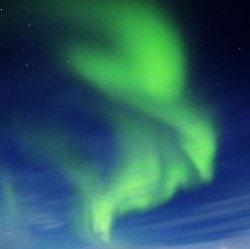
Astronomers have measured the passing of a super-Earth in front of a bright, Sun-like star using a ground-based telescope for the first time. Since detecting a transit is the first step in analyzing a planet’s atmosphere, this success bodes well for characterizing the small planets that upcoming space missions are expected to discover.
The international research team used the 2.5-meter Nordic Optical Telescope on the island of La Palma, Spain, a moderate-sized facility by today’s standards but equipped with state-of-the-art instruments, to make the detection. Previous observations of this planet transit had to rely on space-borne telescopes.
The host star, 55 Cancri, is located just 40 light-years away from us and is visible to the naked eye. During its transit, the planet crosses 55 Cancri and blocks a tiny fraction of the starlight, dimming the star by 1/2000th (or 0.05%) for almost two hours. This shows that the planet is about twice the size of Earth, or 16,000 miles in diameter.
"Our observations show that we can detect the transits of small planets around Sun-like stars using ground-based telescopes," says Ernst de Mooij of Queen’s University Belfast in the United Kingdom, lead author of the study.
He continues, "This is especially important because upcoming space missions such as TESS and PLATO should find many small planets around bright stars and we will want to follow up the discoveries with ground-based instruments."
TESS is a NASA mission scheduled for launch in 2017, while PLATO is to be launched in 2024 by the European Space Agency; both will search for transiting terrestrial planets around nearby bright stars.
"With this result we are also closing in on the detection of the atmospheres of small planets with ground-based telescopes," says co-author Mercedes Lopez-Morales of the Harvard-Smithsonian Center for Astrophysics (CfA). "We are slowly paving the way toward the detection of bio-signatures in Earth-like planets around nearby stars."
"It’s remarkable what we can do by pushing the limits of existing telescopes and instruments, despite the complications posed by the Earth’s own turbulent atmosphere," says study co-author Ray Jayawardhana of York Univerity in Canada. "Remote sensing across tens of light-years isn’t easy, but it can be done with the right technique and a bit of ingenuity."
